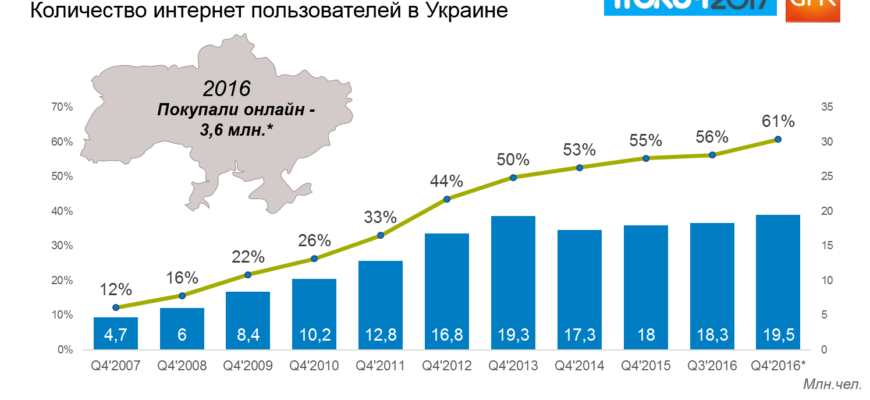IForum – 2017: experts on the consequences of blocking Russian resources for Ukrainian marketing. On May 25, the loudest offline conference of Ukraine on the development of IT> was held in Kyiv. 9,000 people, 100+ speakers and 20,000 cups of coffee (estimated) blew up the IEC. Of course, they also talked about recent events: what will happen to Ukrainian digital without Vkontakte>, Mail>.ru> and an impressive list of other resources? The speakers shared their opinions and told how businesses can adapt to new conditions. Andrey Osadchy from GfK> was the first to speak with powerful statistics on Uanet’s audience. Ukrainian users are catching up with Western ones: 50% of Ukrainians have made a purchase on the Internet at least once.
The rating of social networks in Ukraine by the number of purchases is quite predictable: 1st place – Vk 2nd place – Facebook 3rd place – Odnoklassniki 4th place – Instagram
How many calls and sales will I get by ordering contextual advertising from you?
I need to calculate the conversion of my website Describe
the task
in the application
Calculate potential ad revenue Google
contextual advertising calculator
With regard to gender differences, women are more likely to buy through Vk, men – through Facebook.
There is a clear relationship between the choice of social network and the age of the buyer: The younger he is, the more inclined to buy through Vkontakte>. And vice versa: the older the user, the more purchases he will make in Odnoklassniki. An interesting fact: the number of buyers older than 35 (Andrey calls 35 the magic number) on Instagram is zero.
Perhaps wise people do not believe that in a social network where food photos and funny videos are traditionally shared, you can buy a good product? It remains a mystery. The categories of purchased goods were considered as follows: Clothes and shoes took first place in terms of the number of purchases in social networks. In second place was the classic gender difference: women choose cosmetics, men – auto products.
An interesting correlation between income level and the choice of social network for shopping: The lower the income, the more often they choose Odnoklassniki, Vk, Instagram. As income grows, so does the share of Facebook. The geography of purchases in the social. networks developed in the following way:
How many calls and sales will I get by ordering contextual advertising from you?
I need to calculate the conversion of my website Describe
the task
in the application
Calculate potential ad revenue Google
contextual advertising calculator
The southern and eastern regions were especially attached to the blocked resources. Facebook has the maximum reach in central Ukraine. As a result, business in Odessa, Mykolaiv, Kherson regions will suffer, and Kyiv will survive the restrictions relatively easily. East again “unlucky”. Andrey ends his report ambiguously: “The audience of online shoppers will grow. As for shopping through social networks, we’ll see in a year what the autopsy will show.” Evgeny Shevchenko from UaMaster> shared his observations as follows: In his opinion, 3 categories of companies suffered from the blocking of Russian services:
1. Companies with large email databases;
2. Companies working with contextual advertising in Yandex;
3. A small business that sold products through social media. For the latter, blocking has become fatal. There are a number of reasons for this: the lack of CRM and customer base, the use of only 1 sales channel.
Evgeny’s tip: Expand your sales channels. If most of your traffic comes from organics, don’t wait until the site is blocked and sales become zero.
How could the collapse have been avoided? Using the Smart Insights model. This is a convenient tool for assessing the level of development of a company’s digital marketing.
Its advantages: + You will understand what growth points the company has + Emphasis on strategy and KPIs, not tools Tip 2:
write down your marketing strategy: what results do you want to see in a year, what tools you will use for this, what resources you can allocate (budget, team, technical base)
What is the result? The buyers have not disappeared. They just became harder to segment and understand. Will people buy less online? No, on the contrary. We need to adapt to the fact that there are now 2 monopolists in the market: Google and Facebook>. So, it’s time to better learn the rules of the game. Take change as a field for new opportunities, and everything will definitely work out.
















